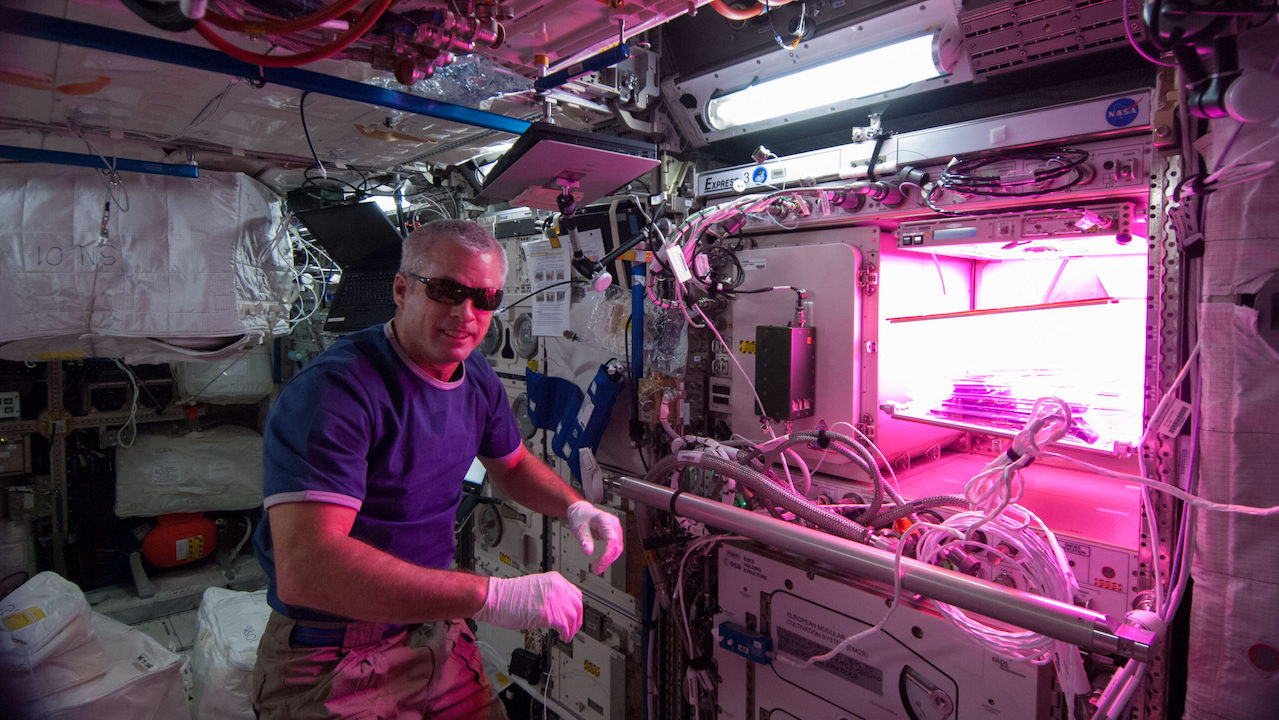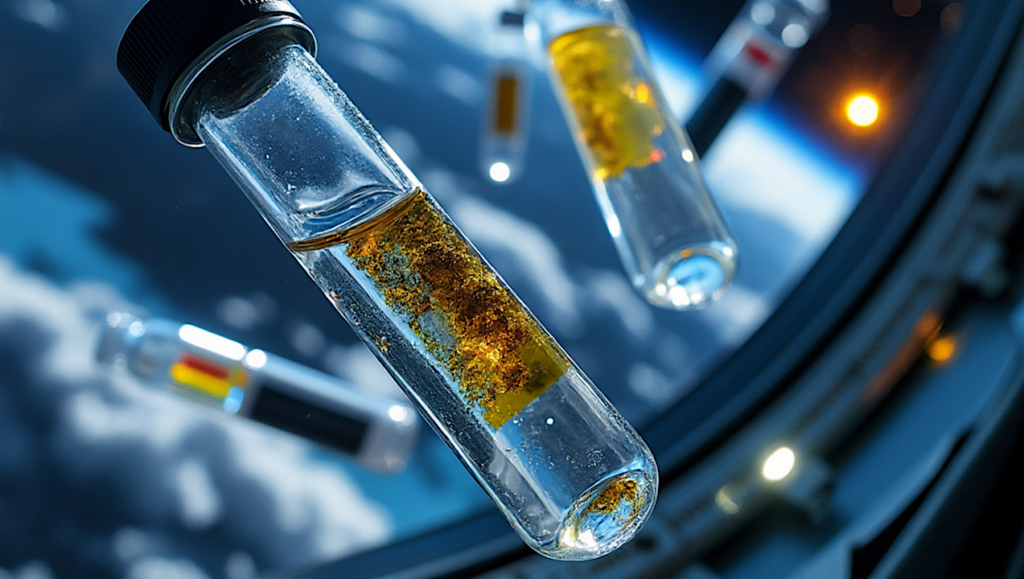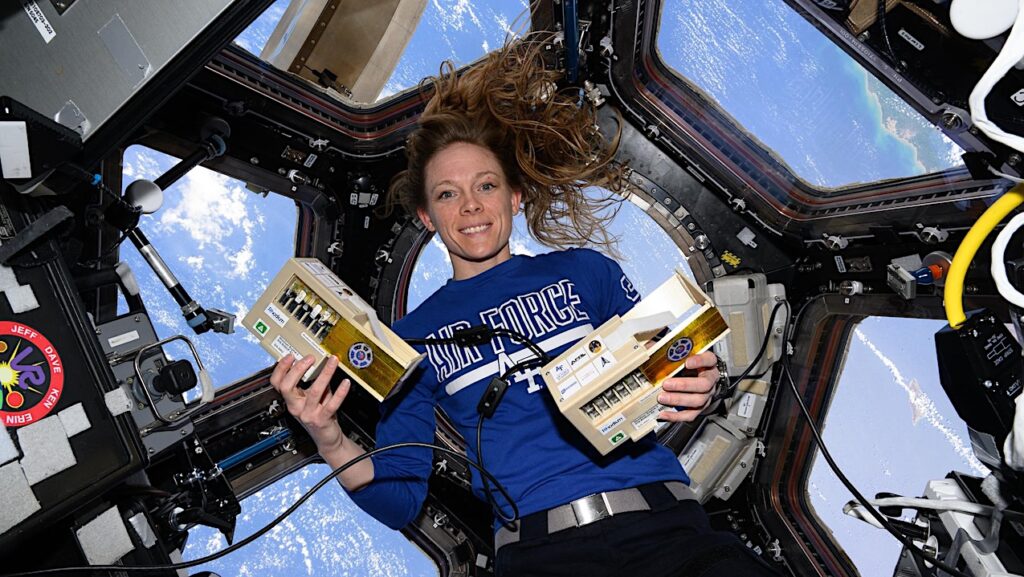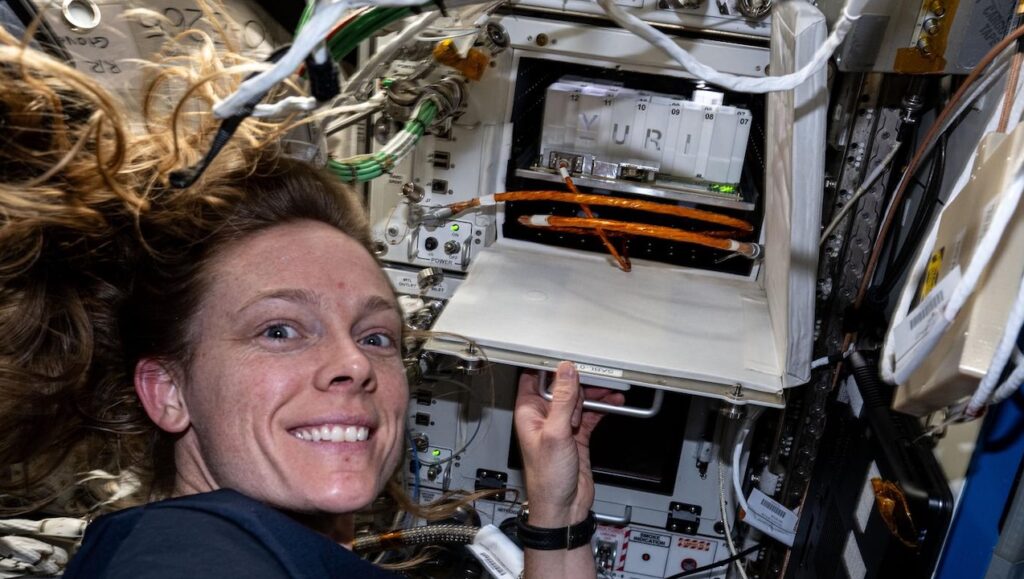NASA Spaceline Current Awareness List #1,106 28 June 2024 (Space Life Science Research Results)

Space Life Science Research Aboard The International Space Station
The abstract in PubMed or at the publisher’s site is linked when available and will open in a new window.
Papers deriving from NASA support:
- Jogdand A, Landolina M, Chen Y.Organs in orbit: How tissue chip technology benefits from microgravity, a perspective.Front Lab Chip Technol. 2024 Mar 6;3:1356688.Note: From the abstract: “This perspective explores the manufacturing and research applications of microgravity tissue chip technology, specifically investigating the musculoskeletal, cardiovascular, and nervous systems.” This article is part of Research Topic “Celebrating 1 Year of Frontiers in Lab on a Chip Technologies” (https://www.frontiersin.org/research-topics/57623/celebrating-1-year-of-frontiers-in-lab-on-a-chip-technologies/articles) and may be obtained online without charge.
Journal Impact Factor: Not available for this journal
Funding: “This study is supported by NIH 7R01AR072027, NIH 1R21AR079153-01A1, NSF 2025362, NSF 2234570, NASA 80JSC022CA006, DOD W81XWH2110274 and the University of Connecticut.” - Mathyk B, Imudia AN, Quaas AM, Halicigil C, Karouia F, Avci P, Nelson NG, Guzeloglu-Kayisli O, Denbo M, Sanders LM, Scott RT, Basar M, Guevara-Cerdán AP, Strug M, Monseur B, Kayisli UA, Szewczyk N, Mason CE, Young SL, Tasoglu S, Costes SV, Beheshti A.Understanding how space travel affects the female reproductive system to the Moon and beyond.npj Women’s Health. 2024 Jun 11;2:20. Review.Note: This article and an article below in the “Other” section (Husna et al.) are part of Collection “Space Omics and Medical Atlas (SOMA) across orbits” (https://www.nature.com/immersive/d42859-024-00009-8/index.html) and may be obtained online without charge.
Journal Impact Factor: Not available for this journal
Funding: F. Karouia, L.M. Sanders, R.T. Scott, S.V. Costes, and A. Beheshti are affiliated with NASA Ames Research Center. - Levin DR, Nelson AM, Zahner C, Stratton ER, Anderson A, Steller J.A method to determine capabilities and resources for spacecraft medical systems.Aerosp Med Hum Perform. 2024 Jul;95(7):403-8.Note: From the abstract: “This paper describes the method for assigning medical diagnostic and treatment capabilities and resources to the database which assists with an updated probabilistic risk analysis (PRA) tool for exploration class medical system planning. The National Aeronautics and Space Administration has used PRA since 2011 to inform mission medical system design, but existing tools are designed only for low Earth orbit. An updated PRA tool was needed to assist with exploration class missions.”
Journal Impact Factor: 0.889
Funding: “This paper was supported by NASA’s Human Research Program. The authors wish to acknowledge the Human Research Program’s Exploration Medical Capability element for their support.” - Wong MC, Bennett JP, Leong LT, Liu YE, Kelly NN, Cherry J, Kloza K, Li B, Iuliano S, Sibonga J, Sawyer A, Ayton J, Shepherd JA.Evaluation of body shape as a human body composition assessment in isolated conditions and remote environments.npj Microgravity. 2024 Jun 24;10:72.PI: J.A. ShepherdNote: This article may be obtained online without charge.
Journal Impact Factor: 5.1
Funding: “…We would like to acknowledge the Translational Research Institute of Space Health through NASA Cooperative Agreement NNX16AO69A-FIP0017, University of Hawaii Graduate Student Organization (#21-09-05) for support in funding this project, and National Institutes of Health (T32CA229110).” - Allred AR, Lippert AF, Wood SJ.Galvanic vestibular stimulation advancements for spatial disorientation training.Aerosp Med Hum Perform. 2024 Jul;95(7):390-8.Note: From the abstract: “Spatial disorientation (SD) remains the leading contributor to Class A mishaps in the U.S. Navy, consistent with historical trends. Despite this, SD training for military aircrew is largely confined to the classroom and experiential training replicating SD illusions is limited and infrequent. Static flight simulators are most commonly used for training but offer no vestibular stimulation to the flight crew, omitting the source of vestibular-mediated SD.”
Journal Impact Factor: 0.889
Funding: S.J. Wood is affiliated with NASA Johnson Space Center. - Grant LK, Kent BA, Rahman SA, St Hilaire MA, Kirkley CL, Gregory KB, Clark T, Hanifin JP, Barger LK, Czeisler CA, Brainard GC, Lockley SW, Flynn-Evans EE.The effect of a dynamic lighting schedule on neurobehavioral performance during a 45-day simulated space mission.SLEEP Advances. 2024 May 30; 5(1):zpae032.PI: G.C. Brainard, S.W. LockleyNote: From the article: “The present study compared a dynamic lighting schedule (DLS) to a standard lighting schedule (SLS) during 45-day missions in the Human Exploration Research Analog (HERA) habitat (Campaign 4) (https://www.nasa.gov/mission/hera/).”
Journal Impact Factor: Not available for this journal
Funding: “This work was supported by NASA grant NNX15AM28G. BAK was supported by NIH-NINDS K99/R00 NS109909-01. GCB and JPH were supported, in part, by NASA grant NNX15AC14G; the Nova Institute, and The Philadelphia Chapter of the Illuminating Engineering Society. EEE, CLK, and KBG were supported by NASA grant NNJ15ZSA001N.” - Tapia CM, Langford SD, Ryder VE.Revisions to limits for toluene in spacecraft air.Aerosp Med Hum Perform. 2024 Jul 1;95(7):399-402.Note: From the abstract: “The original Spacecraft Maximal Allowable Concentrations (SMACs) for toluene (set for 1 h, 24 h, 7 d, 30 d, and 180 d) were first established by NASA in 1996 based on a human study in which no irritation or neurotoxicity was reported following 6-h exposure to 40 ppm toluene vapors. While the toluene SMACs were updated in 2008 to account for auditory, visual, and hormonal effects (for 7 d, 30 d, and 180 d) and to include a long-term SMAC (1000 d) in anticipation of longer spaceflight exploration missions, the short-term SMAC limits (1 h and 24 h) remained unchanged. Acute toluene exposure is reported to result in ocular and nasal irritation, although it is not a primary irritant, as well as central nervous system effects including headaches and dizziness. Long-term exposure to toluene can elicit hepatotoxicity, nephrotoxicity, neurotoxicity, and endocrine toxicity.”
Journal Impact Factor: 0.889
Funding: C.M. Tapia, S.D. Langford, and V.E. Ryder are affiliated with NASA Johnson Space Center. - Pradhan GN, Cevette MJ, Bogle JM, Stepanek J, Wood SJ.Dual opposing-phase galvanic vestibular stimulation modifies perception of coriolis cross-coupling and delays motion sickness onset.Acta Astronautica. 2024 Jun 22. Online ahead of print.Note: From the abstract: “Alterations in vestibular sensory processing following G-transitions lead to head movement sensitivity and motion sickness upon return to Earth’s gravity. The purpose of this study was to evaluate whether a non-pharmaceutical tool using dual, opposing-phase galvanic vestibular stimulation (oGVS) could suppress disorienting illusions and mitigate motion sickness.”
Journal Impact Factor: 3.5
Funding: S.J. Wood is affiliated with NASA Johnson Space Center. - Juliar BA, Stanaway IB, Sano F, Fu H, Smith KD, Akilesh S, Scales SJ, El Saghir J, Bhatraju PK, Liu E, Yang J, Lin J, Eddy S, Kretzler M, Zheng Y, Himmelfarb J, Harder JL, Freedman BS.Interferon-γ induces combined pyroptotic angiopathy and APOL1 expression in human kidney disease.Cell Rep. 2024 Jun 25;43(6):114310.Note: This article may be obtained online without charge.
Journal Impact Factor: 7.5
Funding: “…Studies were supported by NIH awards R01DK130386 (B.S.F., K.D.S., and S.A.), R01DK117914 (B.S.F.), UH3TR000504 (J.H.), UH3TR002158 (J.H.), UH3TR03288 (J.H. and M.K.), U01DK127553 (B.S.F.), U01AI176460 (B.S.F.), R01HL167688 (H.F.), R35GM149516 (H.F.), and 5UC2DK126006 (Stuart Shankland and B.S.F.); Department of Defense awards W81XWH-21-1-0006 and W81XWH-21-1-0007 (B.S.F. and Hannele Ruohola-Baker); DOD Kidney Cancer Research Program Translational Research Partnership Award KC180135 (S.A. and Scott S. Tykodi); and NASA contract #80ARC023CA001.” - Hasenstein KH, Miklave NM.Hydroponics for plant cultivation in space – A white paper.Life Sci Space Res. 2024 Jun 26. Online ahead of print.Journal Impact Factor: 2.5
Funding: “This work was partially supported through NASA grant 80NSSC23K1204.”
Other papers of interest:
- Husna N, Aiba T, Fujita SI, Saito Y, Shiba D, Kudo T, Takahashi S, Furukawa S, Muratani M.Release of CD36-associated cell-free mitochondrial DNA and RNA as a hallmark of space environment response.Nat Commun. 2024 Jun 11;15(1):4814.Note: This article and an article above in the “NASA” section (Mathyk et al.) are part of Collection “Space Omics and Medical Atlas (SOMA) across orbits” (https://www.nature.com/immersive/d42859-024-00009-8/index.html) and may be obtained online without charge.
- Cowen D, Zhang R, Komorowski M.Infections in long-duration space missions.Lancet Microbe. 2024 Jun 8. Review. Online ahead of print.Note: This article may be obtained online without charge.
- Ledford H.How a few days in space can disrupt a person’s biology.Nature. 2024 Jun;630(8017):536-7.Note: This article is from Nature News and may be obtained online without charge.
- Skibba R.Astronauts face health risks-Even on short trips in space.Science. 2024 Jun 14;384(6701):1159-60.Note: This article may be obtained online without charge.
- Waisberg E, Ong J, Masalkhi M, Shimada K, Lee AG.Artificial gravity as a potential countermeasure for spaceflight associated neuro-ocular syndrome.Eye (Lond). 2024 Jun 14.Note: This article is a comment and may be obtained online without charge.
- Casula M, Fais G, Manis C, Scano P, Verseux C, Concas A, Cao G, Caboni P.Cultivation and nutritional characteristics of Chlorella vulgaris cultivated using Martian regolith and synthetic urine.Life Sci Space Res. 2024 Aug; 42;108-16.Note: From the abstract: “Long-term spatial missions will require sustainable methods for biomass production using locally available resources. This study investigates the feasibility of cultivating Chlorella vulgaris, a high value microalgal specie, using a leachate of Martian regolith and synthetic human urine as nutrient sources.”
- Gros A, Furlan FM, Rouglan V, Favereaux A, Bontempi B, Morel JL.Physical exercise restores adult neurogenesis deficits induced by simulated microgravity.npj Microgravity. 2024 Jun 21;10:69.Note: Hindlimb unloading study. This article may be obtained online without charge.
- Grudzińska M, Galanty A, Prochownik E, Kołodziejczyk A, Paśko P.Can simulated microgravity and darkness conditions influence the phytochemical content and bioactivity of the sprouts?-A preliminary study on selected Fabaceae species.Plants (Basel). 2024 May 30;13(11):1515Note: This article is part of Special Issue “Plant Extracts and Their Cytotoxic Activities 2nd Edition” (https://www.mdpi.com/journal/plants/special_issues/FZ9QHWMT1J) and may be obtained online without charge.
- Wang Y, Wang H, Yang Z, Chen Y, Wong DW-C, Lam W-K.Research trends on astronaut physical training as countermeasures: A bibliometric analysis from past 30 years.Microgravity Sci Technol. 2024 Jun 21;36(4):37.
- Ma Z, Li DX, Lan X, Bubelenyi A, Vyhlidal M, Kunze M, Sommerfeldt M, Adesida AB.Short-term response of primary human meniscus cells to simulated microgravity.Cell Commun Signal. 2024 Jun 21;22(1):342.Note: From the abstract: “In this study, primary meniscus fibrochondrocytes isolated from the inner avascular region of human menisci from both male and female donors were seeded into porous collagen scaffolds to generate 3D meniscus models. These models were subjected to both normal gravity and mechanical unloading via simulated microgravity (SMG) for 7 days, with samples collected at various time points during the culture.” This article may be obtained online without charge.
- Mani C, Paul TS, Archambault PM, Marois A.Machine learning workflow for edge computed arrhythmia detection in exploration class missions.npj Microgravity. 2024 Jun 22;10(1):71.Note: From the abstract: “Deep-space missions require preventative care methods based on predictive models for identifying in-space pathologies. Deploying such models requires flexible edge computing, which Open Neural Network Exchange (ONNX) formats enable by optimizing inference directly on wearable edge devices. This work demonstrates an innovative approach to point-of-care machine learning model pipelines by combining this capacity with an advanced self-optimizing training scheme to classify periods of Normal Sinus Rhythm (NSR), Atrial Fibrillation (AFIB), and Atrial Flutter (AFL).” This article may be obtained online without charge.
- Ouchi T, Kono K, Satou R, Kurashima R, Yamaguchi K, Kimura M, Shibukawa Y.Upregulation of Amy1 in the salivary glands of mice exposed to a lunar gravity environment using the multiple artificial gravity research system.Front Physiol. 2024 Jun 25;15:1417719.Note: This article is part of Research Topic “Space Physiology and Medicine: Reports and Unique Data Obtained on Small Sample Sizes” (https://www.frontiersin.org/research-topics/58257/space-physiology-and-medicine-reports-and-unique-data-obtained-on-small-sample-sizes#overview). The Research Topic also includes articles from previous Current Awareness Lists #1,077 https://doi.org/10.3389/fphys.2023.1303938 and https://doi.org/10.3389/fphys.2023.1285802; #1,096 https://doi.org/10.3389/fphys.2024.1369788; #1,102 https://doi.org/10.3389/fphys.2024.1374309; #1,104 https://doi.org/10.3389/fphys.2024.1360353; and #1,015 https://doi.org/10.3389/fphys.2024.1375929. Additional articles will be forthcoming and may be found in the link to the Research Topic. This article may be obtained online without charge.
- Beer J, Mojica AJ, Blacker KJ, Dart TS, Morse BG, Sherman PM.Relative severity of human performance decrements recorded in rapid vs. gradual decompression.Aerosp Med Hum Perform. 2024 Jul;95(7):353-66.
- Dong B, Xue R, Li J, Ling S, Xing W, Liu Z, Yuan X, Pan J, Du R, Shen X, Zhang J, Zhang Y, Li Y, Zhong G.Ckip-1 3’UTR alleviates prolonged sleep deprivation induced cardiac dysfunction by activating CaMKK2/AMPK/cTNI pathway.Mol Biomed. 2024 Jun 14;5:23.Note: This article may be obtained online without charge.
- Horeau M, Navasiolava N, Van Ombergen A, Custaud MA, Robin A, Ropert M, Antunes I, Bareille MP, Billette De Villemeur R, Gauquelin-Koch G, Derbré F, Loréal O.Dry immersion rapidly disturbs iron metabolism in men and women: Results from the VIVALDI studies.npj Microgravity. 2024 Jun 15;10:68.Note: This article may be obtained online without charge.
Astrobiology, microgravity, space biology,








